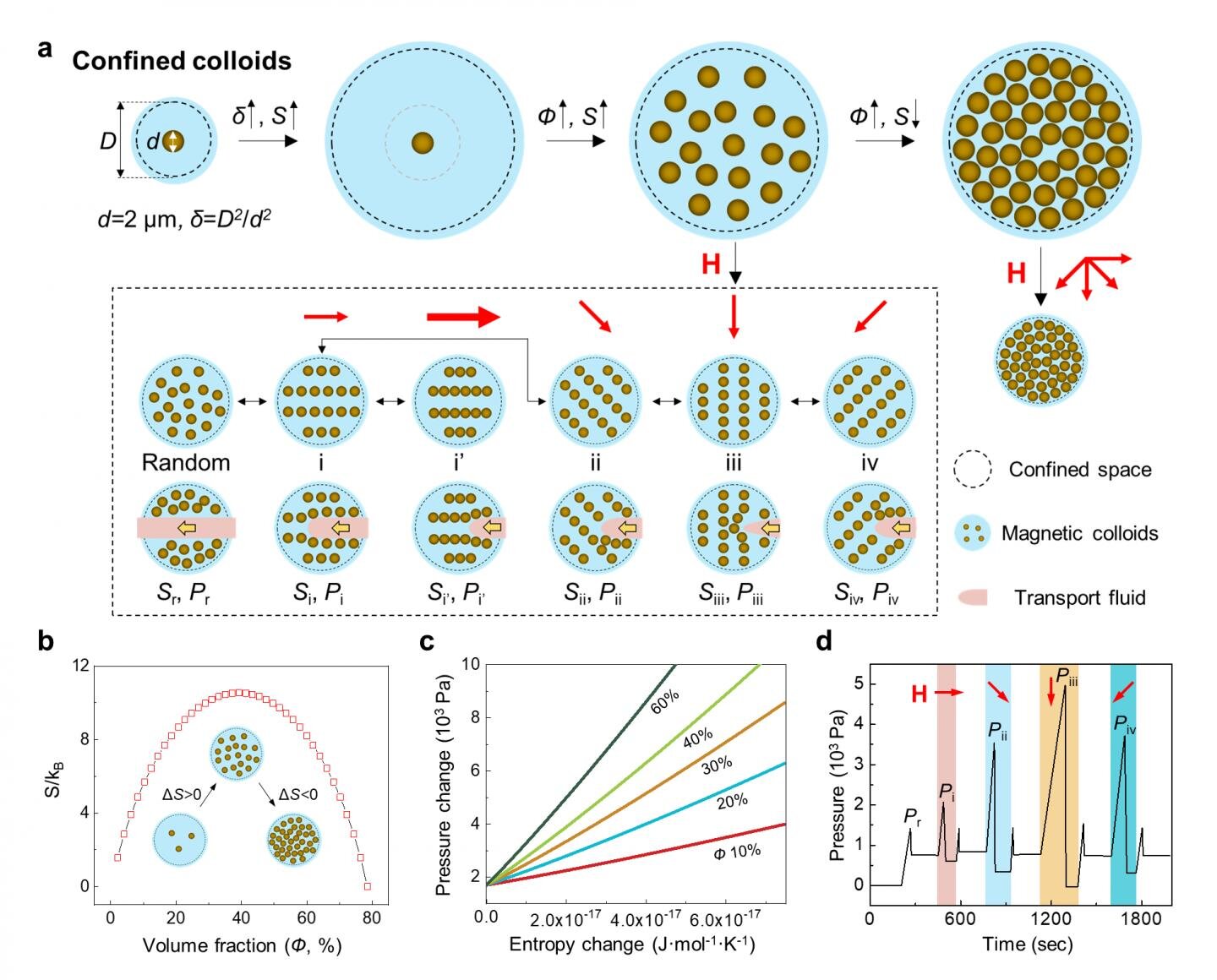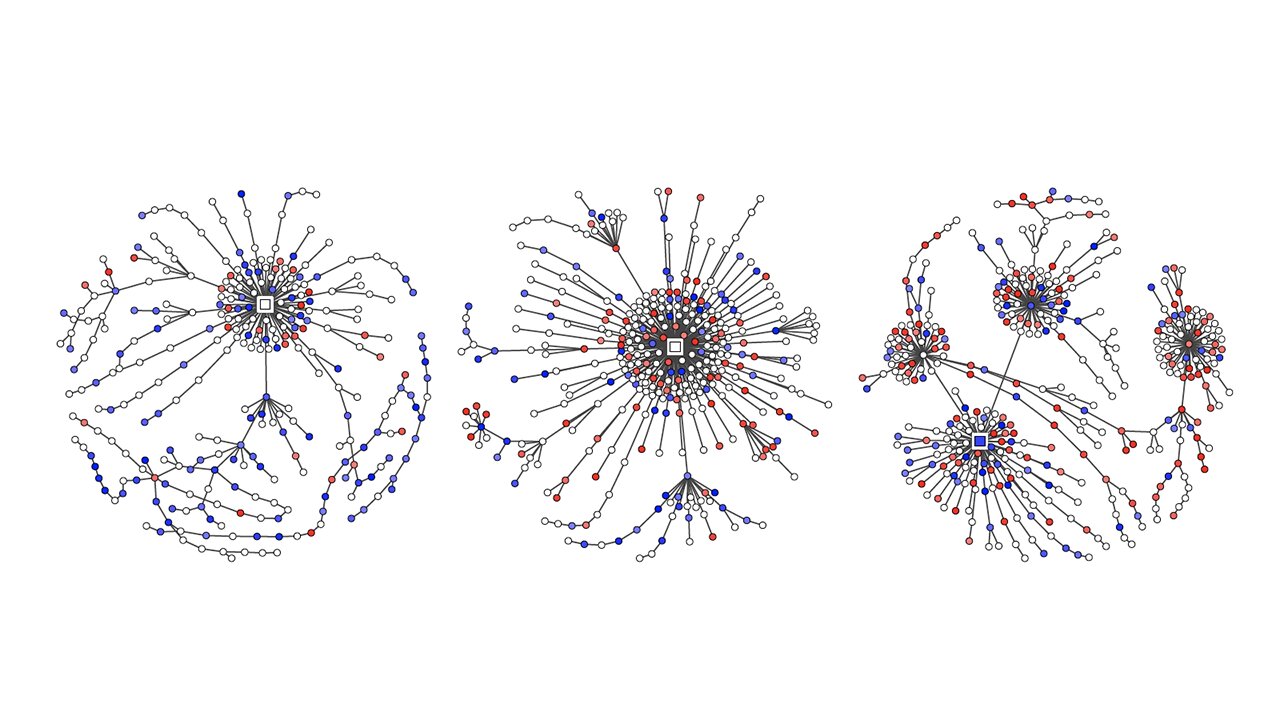#Confined magnetic colloidal system for controllable fluid transport

“#Confined magnetic colloidal system for controllable fluid transport”

Colloidal suspensions of microscopic particles show complex and interesting collective behaviors. In particular, the collective dynamics of colloids is fundamental and ubiquitous for materials assembly, robotic motion, microfluidic control, and in several biological scenarios. The collective dynamics of confined colloids can be completely different from that of free colloids: for instance, confined colloids can self-organize into vortex structures, coherent motion, or different phase behaviors. On one hand, due to the complexity of colloidal suspensions, how to finely tune the collective dynamics of confined colloids remains elusive. On the other hand, since the microscale confinement is on the same length scale as the colloidal size, it is difficult to determine how the colloids interplay with each other and the geometrical constraints.
To study the colloidal collective in confinements, prior work has been focused on the microscopic visualization and simulation method, lacking direct evidence to characterize the mechanical property of colloidal interaction. Can this mechanical property be probed in a direct way or expressed as feedback of force in real-time? With the help of liquid gating technology, the answer could be yes. The leading research field “Liquid gating technology” was selected as the “2020 Top Ten Emerging Technologies In Chemistry” announced by International Union of Pure and Applied Chemistry (IUPAC). Liquid gating technology allows certain liquids to selectively open and close pores on-demand. Especially, liquid gating membranes can respond to pressure changes, which also indicate transmembrane fluid transport capability. Therefore, utilizing the pressure-driven intrusion fluids as efficient causes, the mechanics of the confined colloids can be determined in real-time. In a new research article published in the Beijing-based National Science Review, scientists at Xiamen University present a new paradigm of the liquid gating system that confines the magnetic colloidal suspension in a porous matrix. This confined magnetic colloid system (CMCS) can probe the mechanical properties of the colloidal suspension in real-time, showing the ability to allow or stop the microscale flow or dynamically manipulate the fluid transport.
Interestingly, it seems that “freedom is not free.” Firstly, the colloidal suspensions are trapped by the porous matrix. However, the confined colloids are also free in their limited space because their collective dynamics is vastly controllable via the magnetic field. The collective configuration of the confined colloids is statistically and thermodynamically characterized by the colloidal entropy. Meanwhile, the interplay between the confined colloids and the interplay between the colloidal suspension and geometrical constraints are simultaneously indicated by the pressure value. Notably, the pressure change is in a linear relationship with the entropy change. Both of them are prominently affected by the geometrical constraints, packing fraction of colloids, and the strengths and directions of magnetic fields. Moreover, as a proof of concept, this system has been demonstrated for the applications of dynamic and preprogrammed fluid transport, remote drug release, microfluidic logic, and chemical reaction, enabling sustainable antifouling behavior.
Beyond the magnetic field, the reported strategy of entropy regulation of confined colloids is also applicable to other remote external stimuli, such as acoustic field, light field, electric field, and so on. This work would enlighten the exploitation for fundamental research of colloidal science, and applications ranging from fluid transport, multiphase separation, logic microfluidics, to programmable cargo transport. The findings described here would also deepen the understanding of phenomena such as swarm intelligence, cellular collective, pollutant treatment by granular particles, and stop-and-go in traffic jamming.
A universal description of non-equilibrium colloid phase separation
Zhizhi Sheng et al, Reconfiguring confined magnetic colloids with tunable fluid transport behavior, National Science Review (2020). DOI: 10.1093/nsr/nwaa301
Citation:
Confined magnetic colloidal system for controllable fluid transport (2021, March 12)
retrieved 13 March 2021
from https://phys.org/news/2021-03-confined-magnetic-colloidal-fluid.html
This document is subject to copyright. Apart from any fair dealing for the purpose of private study or research, no
part may be reproduced without the written permission. The content is provided for information purposes only.
If you liked the article, do not forget to share it with your friends. Follow us on Google News too, click on the star and choose us from your favorites.
For forums sites go to Forum.BuradaBiliyorum.Com
If you want to read more Like this articles, you can visit our Science category.




